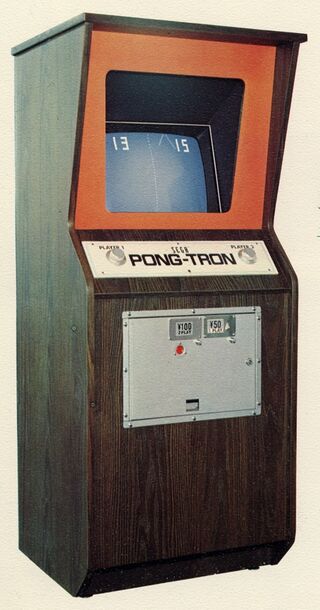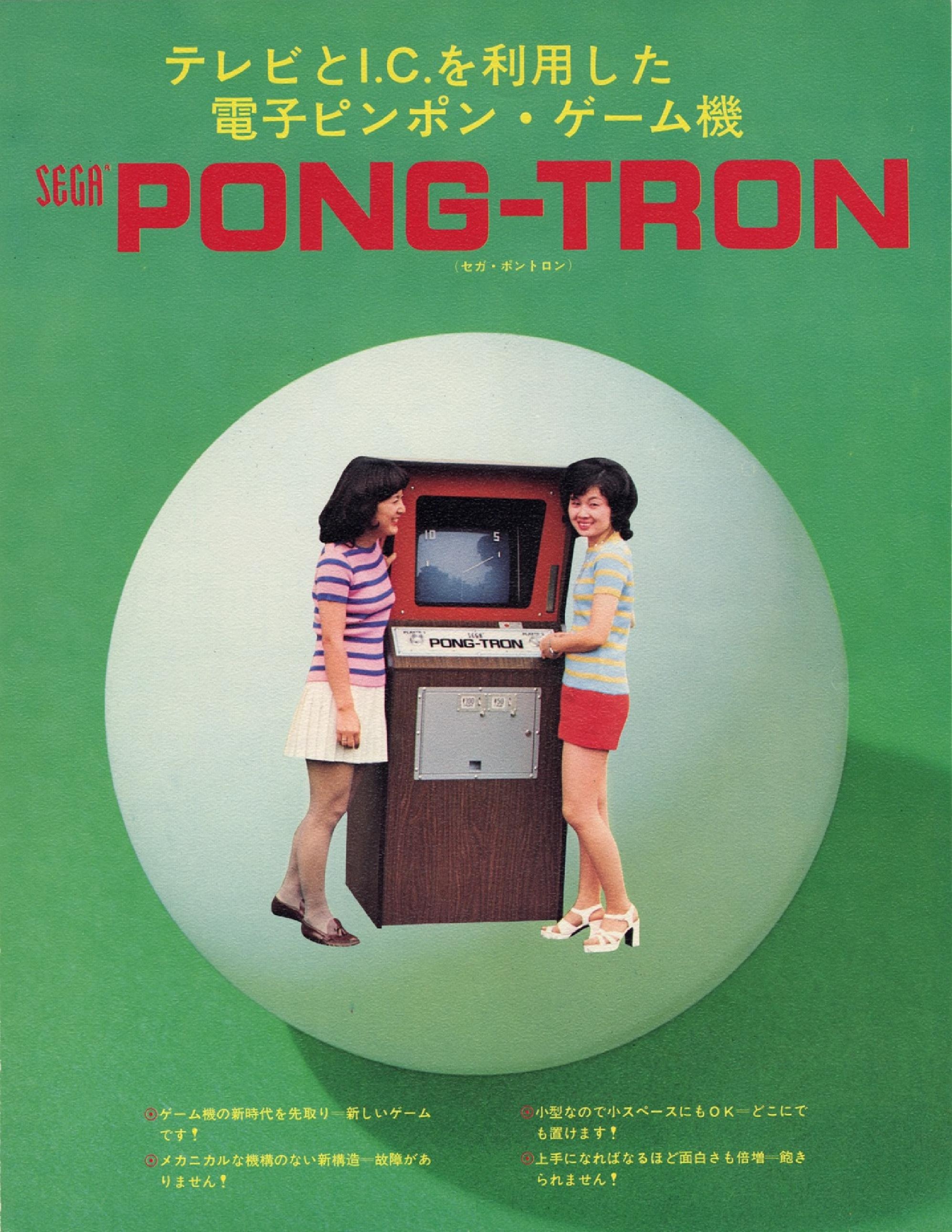Difference between revisions of "Pong-Tron"
From Sega Retro
| Line 4: | Line 4: | ||
| developer=[[Sega]] | | developer=[[Sega]] | ||
| system=Discrete logic arcade | | system=Discrete logic arcade | ||
| − | |||
| sounddriver= | | sounddriver= | ||
| peripherals= | | peripherals= | ||
| Line 13: | Line 12: | ||
}} | }} | ||
}} | }} | ||
| − | {{stub}}''''' | + | {{sub-stub}}'''''{{PAGENAME}}''''' (ポントロン) is a 1973 discrete logic arcade game produced by [[Sega]]. It is a clone of [[Atari]]'s 1972 game, ''[[wikipedia:Pong|Pong]]'' built specifically for Japanese audiences. |
''Pong-Tron'' differs very little from Atari's offering, however this release is significant as it stands as Sega's first arcade game to incorporate a CRT monitor and thus be classed as a "video game". Prior to ''Pong-Tron'''s release, Sega had built its successes through electro-mechanical arcade games, pinball tables, slot machines and jukebox distribution. | ''Pong-Tron'' differs very little from Atari's offering, however this release is significant as it stands as Sega's first arcade game to incorporate a CRT monitor and thus be classed as a "video game". Prior to ''Pong-Tron'''s release, Sega had built its successes through electro-mechanical arcade games, pinball tables, slot machines and jukebox distribution. | ||
''Pong-Tron'' followed later in the year by the updated ''[[Pong-Tron II]]'' (and ''[[Hockey TV]]'', another pseudo-''Pong'' clone). The housing was also recycled for ''[[Balloon Gun]]''. Sega's main competitor at the time, [[Taito]] also released a similar Japanese clone in the form of ''Elepong'', also in 1973. | ''Pong-Tron'' followed later in the year by the updated ''[[Pong-Tron II]]'' (and ''[[Hockey TV]]'', another pseudo-''Pong'' clone). The housing was also recycled for ''[[Balloon Gun]]''. Sega's main competitor at the time, [[Taito]] also released a similar Japanese clone in the form of ''Elepong'', also in 1973. | ||
| + | |||
| + | ==Specifications== | ||
| + | ===Dimensions=== | ||
| + | {{Dimensions|hm=1.56|wm=0.65|dm=0.59|diagramsize=150|ref={{fileref|PongTron DiscreteLogic JP Flyer.pdf}}}} | ||
| + | *'''Mass''': 79kg | ||
==Promotional material== | ==Promotional material== | ||
| − | + | {{gallery | |
| − | + | |{{gitem|PongTron DiscreteLogic JP Flyer.pdf|page=1,2|JP flyer}} | |
| − | + | }} | |
==References== | ==References== | ||
<references/> | <references/> | ||
| − | |||
| − | |||
| − | |||
Revision as of 07:34, 13 July 2018
| Pong-Tron | |||||||||
|---|---|---|---|---|---|---|---|---|---|
| System(s): Discrete logic arcade | |||||||||
| Publisher: Sega | |||||||||
| Developer: Sega | |||||||||
| Genre: Action | |||||||||
| Number of players: 2 | |||||||||
|
This teeny-tiny article needs some work. You can help us by expanding it.
Pong-Tron (ポントロン) is a 1973 discrete logic arcade game produced by Sega. It is a clone of Atari's 1972 game, Pong built specifically for Japanese audiences.
Pong-Tron differs very little from Atari's offering, however this release is significant as it stands as Sega's first arcade game to incorporate a CRT monitor and thus be classed as a "video game". Prior to Pong-Tron's release, Sega had built its successes through electro-mechanical arcade games, pinball tables, slot machines and jukebox distribution.
Pong-Tron followed later in the year by the updated Pong-Tron II (and Hockey TV, another pseudo-Pong clone). The housing was also recycled for Balloon Gun. Sega's main competitor at the time, Taito also released a similar Japanese clone in the form of Elepong, also in 1973.
Specifications
Dimensions
- Mass: 79kg



